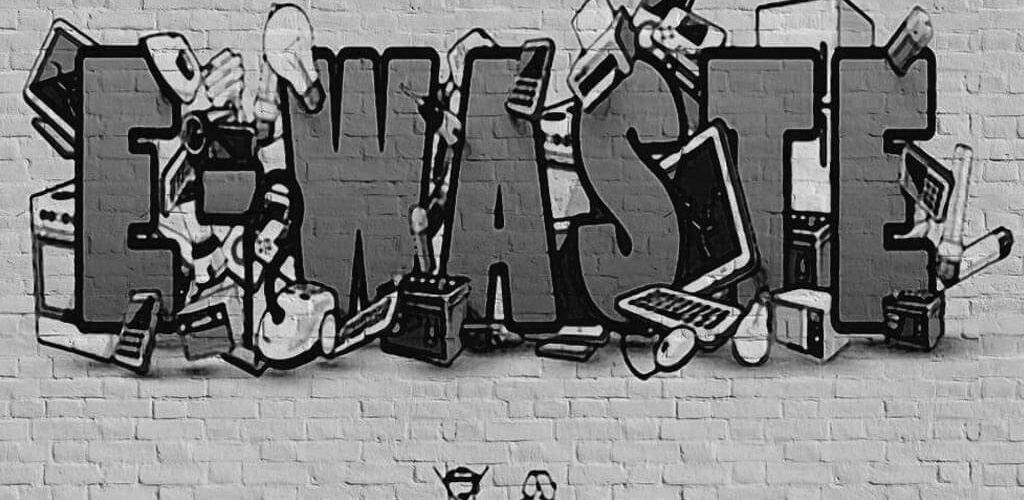The production of “digital” waste is growing… And recycling doesn’t keep up
Have you ever wondered what will happen to the smartphone you are holding in your hands right now when you decide to get rid of it? What about the tablet or laptop from which you send emails and surf the internet?
He doesn’t even imagine how long the path that leads “WEEE”, i.e. so-called waste from electrical and electronic equipment, to the end of its life can be. All these objects, which are an integral part of our lives, will swell a mountain of e-waste that the world is not yet able to recycle safely.

The Numbers
Let’s look at some numbers to get an idea of how much “high-tech garbage” we produce. In 2019 alone, 350 cruise ships produced an amount of electrical and electronic waste worldwide. Translated into numbers, 53.6 million tons which, put in a row, would form a straight line of 125 kilometers.
This is what emerges from the “Global E-waste Monitor 2020” of the United Nations, Asia is the continent with the highest amount i.e. 24.9 million tons. Incredible figures if you think that every European citizen, every year, produces just over 16 kilos of WEEE with Italy above average with 17.2 kilos per person.
Mind-boggling numbers if you consider that every year the total amount of electrical and electronic equipment that the world uses grows by 2.5 million tons. And this is a good thing because it means that many devices that improve our lives are increasingly available even to those who could not afford them before.
But, at this rate, in 20 years’ time it is possible that the amount of e-waste produced in the world will reach 74.7 million tons, double what it was 16 years ago. This makes e-garbage the world’s fastest-growing household waste stream, aided by electronic products with shorter life cycles and less cost-effective to repair.

The new life of WEEE
The most alarming data, however, is related to recycling percentages, i.e. our ability to give new life to objects that we have used and thrown away when we no longer needed them, when they have gone out of fashion or, more simply, when they have stopped working.
In fact, only 17.4% of the total is sent for recycling according to paths dictated by the national policies of the individual states. A real problem that, in addition to damaging the environment, prevents the recovery and reuse of metals such as gold, silver and copper contained in devices for an estimated value of around 57 billion dollars.
Behind the correct disposal of this type of waste there are two important aspects. The first, as we mentioned before, is that of the recovery of precious metals which, in addition to having a very high economic value (a river of money that could be recovered), also have an environmental value that should not be underestimated because recovering precious metals from end-of-life devices means not resorting to natural resources and consequently means exploiting our planet less.

Pollution and health
Then there is the protection of the environment, an issue of primary importance. The issue is clear: without recycling, Toxic substances Mercury, brominated flame retardants, chlorofluorocarbons and hydrochlorofluorocarbons are more likely to be released into the environment.
Exposure to mercury used to illuminate monitors, for example, can cause brain damage. Every year, at least 50 tons of mercury are dispersed. Not to mention old refrigerators and air conditioners that can slowly release greenhouse gases. And since in many countries around the world we are not able to dispose of or recycle it, this waste is loaded onto containers, loaded and shipped from the ports of more developed countries to developing ones, such as Ghana.
Waiting for them at their destination is a widespread circle of intermediaries, dealers, repairers and second-hand dealers who choose, test their operation and recirculate the electronic waste from rich countries in the local market.

The Scrap Dump
In Ghana, not too far from the capital, there is a place where the rich West “sweeps the dust under the carpet” that calling a landfill would be an understatement because around the “digital garbage” there is a real town with lots of shops, and mosques among old piles of scrap. It’s called Agbogbloshie and it’s the largest electrical and electronic waste dump on the “Dark Continent”. On the streets of Agbogbloshie, many people find e-waste to be a source of livelihood. Men, women and children dismantle, recover, weigh, transport and resell parts and metals made from scrap. Children burn tons of electrical cables to extract copper and then sell it for a few cedis per kilo. The toxic fumes rise into the sky, poison the air and go to rest on the soil and on the vegetables sold at the market. The consequences, especially for the youngest, are devastating.

The Good News
Among numbers and percentages that are anything but reassuring, there is good news, and that is that attention to this issue is slowly growing, perhaps due to a newfound environmental sensitivity or perhaps because the WEEE recycling sector is attractive to those who want to invest in the recycling of these objects.
Suffice it to say that at the end of 2019 it is that in 78 countries (equal to 71% of the world’s population) there are policies for the management of electronic waste or there are plans to implement ad hoc regulations.
